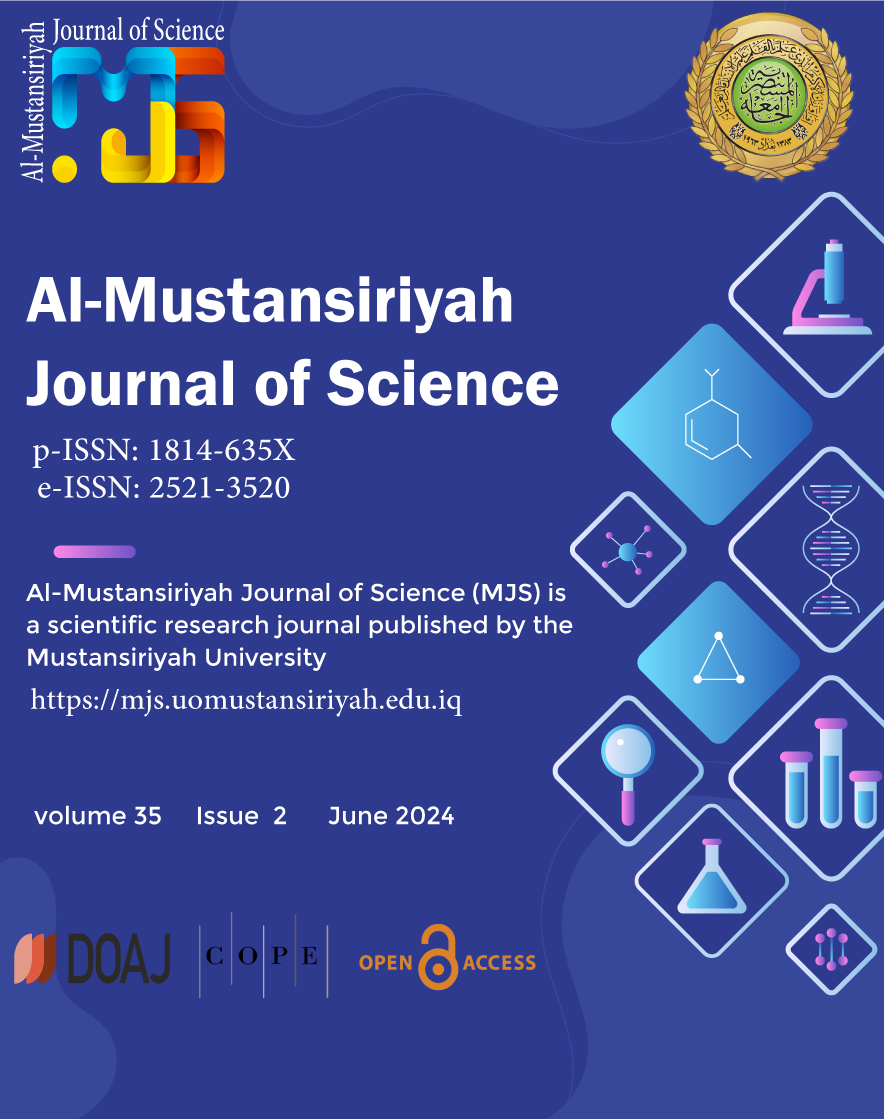DeepRing: Convolution Neural Network based on Blockchain Technology
DOI:
https://doi.org/10.23851/mjs.v35i2.1476Keywords:
DeepRing, CNN, mnist, Fashion-MNIST, Blockchain technologyAbstract
Background: This paper addresses specific challenges in predictive modeling, namely transparency issues, susceptibility to data manipulation, and fairness concerns. To overcome these obstacles, the study introduces DeepRing, approach that combines Convolutional Neural Networks (CNNs) and blockchain technology. Objective: DeepRing aims to enhance prediction integrity, data security, and fairness, thereby improving the ethical considerations, reliability, and accountability of predictive models. Methods: involves iterative training of a CNN model on five diverse datasets, including CIFAR-10, Fashion-MNIST, MNIST, CIFAR-100, and a Hands dataset. The CNN architecture incorporates Conv2D layers, MaxPooling2D layers, and Dense layers. Training metrics such as accuracy and sparse categorical cross-entropy loss are monitored, with the Adam optimizer employed. While achieving high accuracy on Plam (0.5300), MNIST (0.9978) and Fashion MNIST (0.9673), DeepRing exhibits moderate performance on CIFAR-10 (0.9296) and lower accuracy on CIFAR-100 (0.5973). Results: demonstrate the effectiveness of DeepRing in improving accuracy and enhancing model performance across various datasets. However, further development and validation are essential for successful model implementation, further development and validation are essential for successful model implementation. Conclusions: Introduces DeepRing as an innovative solution to address key challenges in predictive modeling, specifically focusing on transparency issues, susceptibility to data manipulation, and fairness concerns. By combining Convolutional Neural Networks (CNNs) with blockchain technology, DeepRing aims to elevate prediction integrity, enhance data security, and promote fairness, thereby contributing to the improvement of ethical considerations, reliability, and accountability in predictive modelling.
Downloads
References
L. Y and Y. Bengio, Convolutional networks for images, speech, and time-series. MIT Press, 1995.
A. Albakri and C. Mokbel, "Convolutional neural network biometric cryptosystem for the protection of the blockchain's private key," in Elsevier B.V, 2019.
A. Goel and A. Agarwal, "Deepring: Protecting deep neural network with blockchain," in IEEE, 2019.
T. Y. Kim and S. B. Cho, "Predicting residential energy consumption using cnn-lstm neural networks," Energy, 2019.
J. Li and X. Li, "A directed acyclic graph network combined with cnn and lstm for remaining useful life prediction,"IEEE Access, 2019.
A. Alam and H. Islam, "Malware detection in blockchain using cnn," Brac University, 2021.
G. C. Sekhar and A. Rajendran, "A secure framework of blockchain technology using cnn long short-term memory hybrid deep learning model," Indonesian Journal of Electrical Engineering and Computer Science, 2022.
D. Patel and H. Sanghvi, "Blockcrime: Blockchain and deep learning-based collaborative intelligence framework to detect malicious activities for public safety," Mathematics, 2022.
A. Albakri and C. Mokbel, "Convolutional neural network biometric cryptosystem for the protection of the blockchain's private key," in Elsevier B.V, 2019.
A. Goel and A. Agarwal, "Deepring: Protecting deep neural network with blockchain," in IEEE, 2019.
T. Y. Kim and S. B. Cho, "Predicting residential energy consumption using cnn-lstm neural networks," Energy, 2019.
J. Li and X. Li, "A directed acyclic graph network combined with cnn and lstm for remaining useful life prediction," IEEE Access, 2019.
S. T. Abdulrazzaq and F. S. Omar, "Decentralized security and data integrity of blockchain using deep learning techniques," in Periodicals of Engineering and Natural Sciences, Sep. 2020, pp. 1911-1923.
A. Alam and H. Islam, "Malware detection in blockchain using cnn," Brac University, 2021.
G. C. Sekhar and A. Rajendran, "A secure framework of blockchain technology using cnn long short-term memory hybrid deep learning model," Indonesian Journal of Electrical Engineering and Computer Science, 2022.
D. Patel and H. Sanghvi, "Blockcrime: Blockchain and deep learning-based collaborative intelligence framework to detect malicious activities for public safety," Mathematics, 2022. doi: 10.3390/math10173195.
I. H. Sarker, "Deep cybersecurity: A comprehensive overview from neural network and deep learning perspective," SN Computer Science, vol. 2, no. 3, p. 154, 2021.
T. Ching, D. S. Himmelstein, B. K. Beaulieu-Jones, A. A. Kalinin, B. T. Do, G. P. Way, E. Ferrero, P.-M. Agapow, M. Zietz, and M. M. Hoffman, "Opportunities and obstacles for deep learning in biology and medicine," Journal of The Royal Society Interface, vol. 15, no. 141, p. 20 170 387, 2018.
A. Mathew, P. Amudha, and S. S. Sivakumari, "Deep learning techniques: An overview," in Advanced Machine Learning Technologies and Applications: Proceedings of AMLTA 2020, 2021, pp. 599-608.
I. Lasri, A. R. Solh, and M. E. Belkacemi, "Facial emotion recognition of students using convolutional neural network," in 2019 third international conference on intelligent computing in data sciences (ICDS), IEEE, 2019.
S. Eisele et al., "Safe and private forward-trading platform for transactive microgrids," ACM Transactions on Cyber-Physical Systems, vol. 5, no. 1, pp. 1-29, 2020.
P. Gaba et al., "Impact of block data components on the performance of blockchain-based vanet implemented on hyperledger fabric," IEEE Access, vol. 10, pp. 71 003-71 018, 2022.
B. C. Ghosh et al., "Leveraging public-private blockchain interoperability for closed consortium interfacing," in IEEE INFOCOM 2021-IEEE conference on computer communications, IEEE, 2021.
A. Amanat et al., "Blockchain and cloud computing-based secure electronic healthcare records storage and sharing,"Frontiers in Public Health, vol. 10, p. 938 707, 2022.
R. Sonmez, F. Ö. Sönmez, and S. Ahmadisheykhsarmast, "Blockchain in project management: A systematic review of use cases and a design decision framework," Journal of Ambient Intelligence and Humanized Computing, 2021.
Downloads
Key Dates
Received
Revised
Accepted
Published
Data Availability Statement
The data that support the findings of this study are openly available at:
https://www.cs.toronto.edu/ kriz/cifar.html
https://www.tensorflow.org/datasets/catalog/fashion_mnist
https://www.kaggle.com/datasets/haohaoxuexiba/hands-plam
Issue
Section
License
Copyright (c) 2024 Sura Hamed Mousa, Narjis Mezaal Shati, Nageswari Sakthivadivel

This work is licensed under a Creative Commons Attribution 4.0 International License.
(Starting May 5, 2024) Authors retain copyright and grant the journal right of first publication with the work simultaneously licensed under a Creative Commons Attribution (CC-BY) 4.0 License that allows others to share the work with an acknowledgement of the work’s authorship and initial publication in this journal.






















